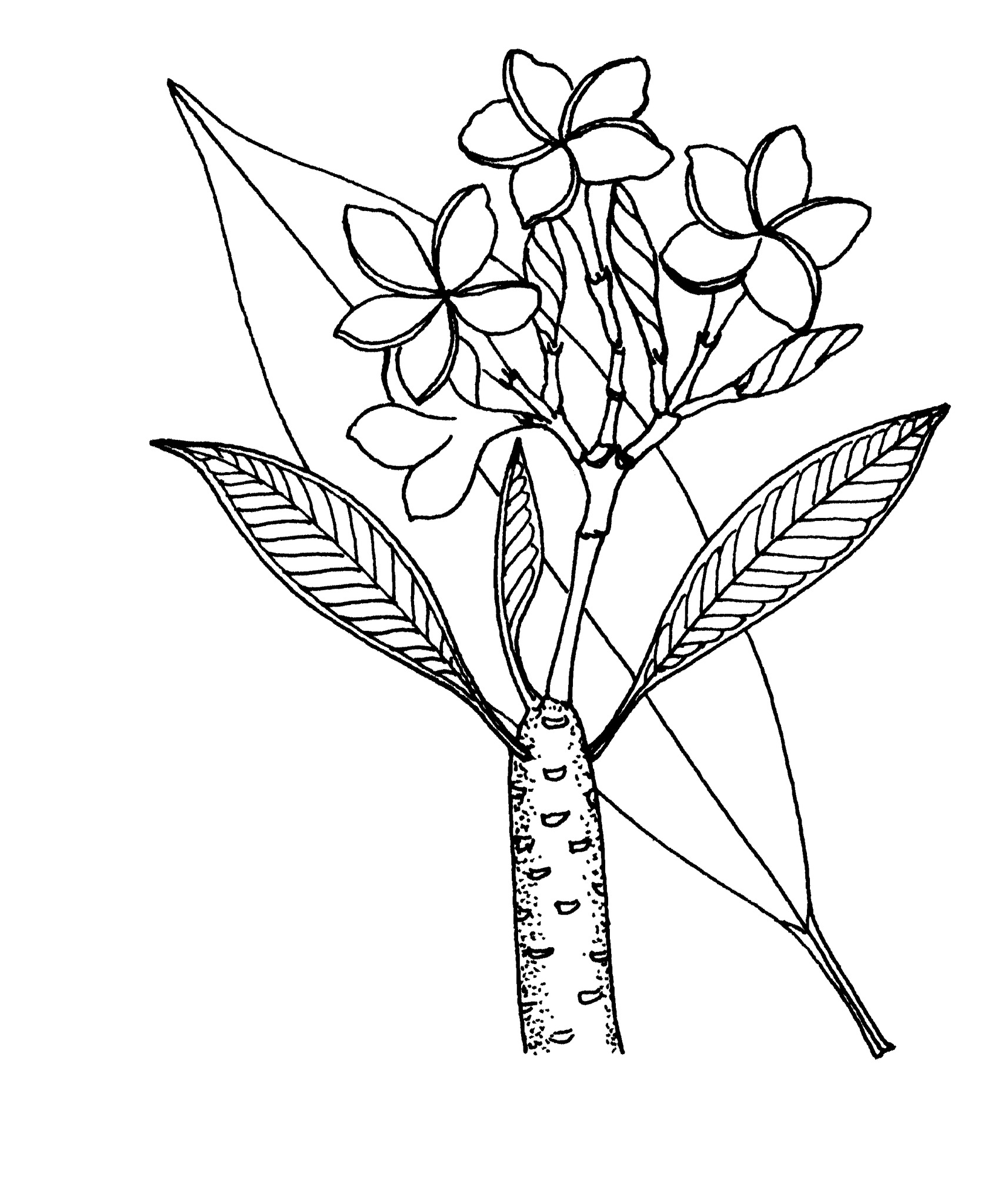
Named for Charles Plumier (1646–1704), French Franciscan monk who botanised in the Caribbean.
Shrubs or small trees, deciduous or evergreen; latex white. Stems fleshy-succulent, brittle, without spines. Leaves alternate, stalked; blade well developed, mucilage glands absent at base. Inflorescence terminal or axillary, cymose. Flowers sweetly scented, stalked. Corolla salver-shaped; tube cylindrical; lobes convolute in bud, overlapping to the left. Corolline corona absent. Stamens enclosed, attached near middle of tube, not sticking to style head. Disk absent. Fruit of 2 woody follicles, of separate carpels, dehiscent along ventral suture. Seeds numerous, flattened, oblong, basally winged, without hair tufts.
Two species and numerous unnamed cultivars are extensively cultivated.
Frost-sensitive.
Cuttings or seeds.
Fleshy-succulent brittle stems.
8 species in C and S America.
Woodson (1938), Lippold (1979), Thornton & Thornton (1985), Eggenberger & Eggenberger (1994).
Source: (2002). Apocynaceae. In: . Horticultural Flora of South-eastern Australia. Volume 4. Flowering plants. Dicotyledons. Part 3. The identification of garden and cultivated plants. University of New South Wales Press.
